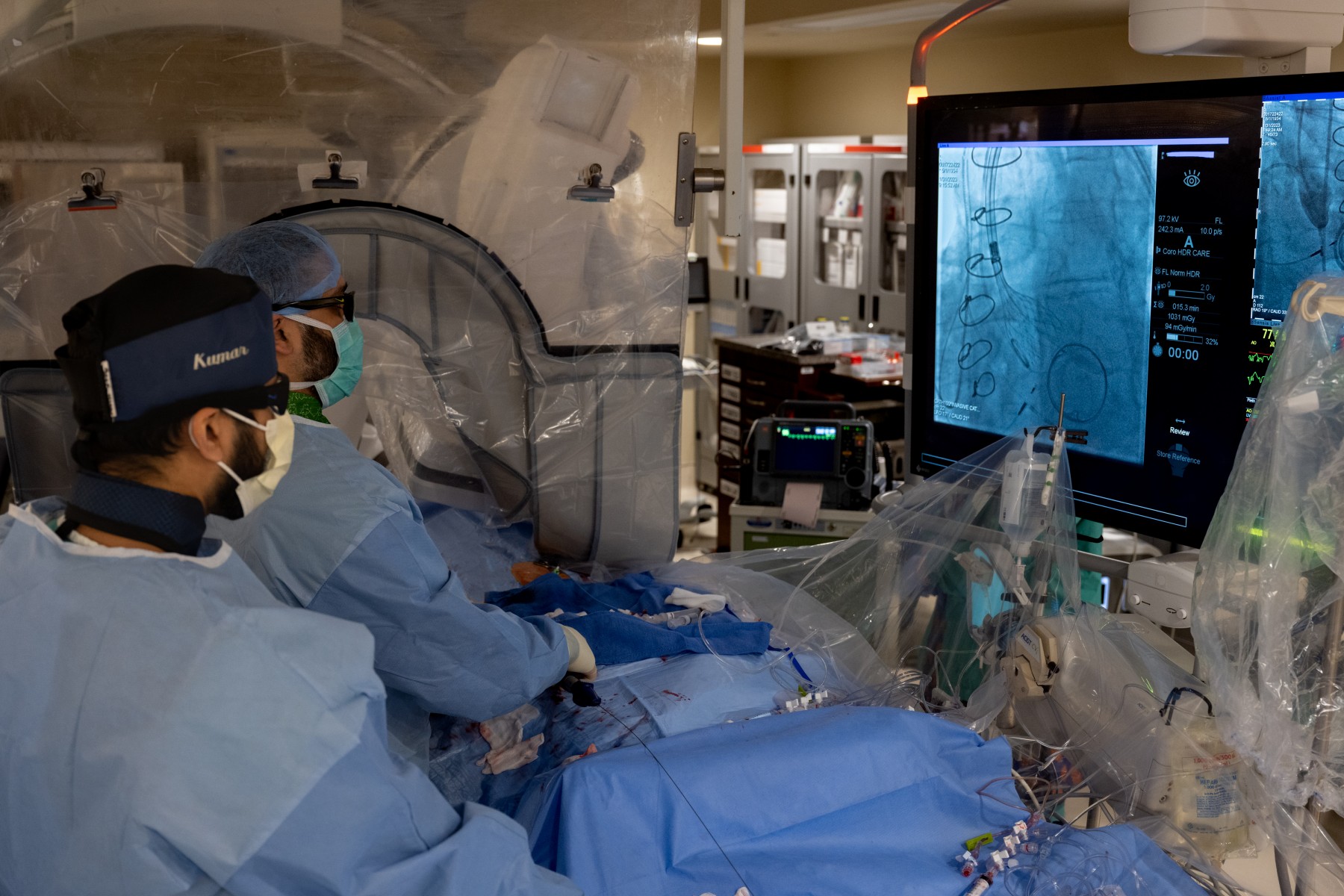Northwestern Medicine Central DuPage Hospital completes 500th transcatheter aortic valve replacement

WINFIELD, Ill. - Northwestern Medicine Bluhm Cardiovascular Institute at Central DuPage Hospital kicked off American Heart Month with an exciting milestone -- its 500th transcatheter aortic valve replacement (TAVR) procedure. With TAVR, a diseased aortic valve can be replaced using a catheter-based technique instead of open-heart surgery.
“It is a very proud moment for our TAVR program to have reached the 500th patient milestone. We have continued to provide this service to our patients at Northwestern Medicine Central DuPage Hospital in a safe and efficient manner achieving stellar outcomes in the process,” said Imran N. Ahmad, MD, interventional cardiologist and medical director of the Northwestern Medicine Central DuPage Hospital Cardiac Catheterization Laboratory. “This accomplishment is reflective of the hard work, dedication and collaborative approach we provide to each of our patients.”  Northwestern Medicine Central DuPage Hospital achieved the highest rating of “High Performing” from U.S. News & World Report in their quality indicators for 30-day survival and stroke prevention.
Northwestern Medicine Central DuPage Hospital achieved the highest rating of “High Performing” from U.S. News & World Report in their quality indicators for 30-day survival and stroke prevention.
In patients with aortic valve stenosis, the aortic valve is narrowed, restricting blood flow from the heart. During a TAVR procedure, an interventional cardiologist and/or a cardiac surgeon inserts a catheter (tube) in the body through an artery. The TAVR valve is compressed and advanced by a catheter through an artery until it reaches the diseased aortic valve. A balloon on the catheter expands to secure the TAVR valve within the diseased aortic valve and then the catheter is removed. The secured TAVR valve remains in place pushing the diseased valve out of the way, allowing the TAVR valve to take over the job of regulating blood flow from the heart.
Transcatheter techniques like those used in TAVR allow the procedure to be performed while the patient’s heart is still beating, eliminating the need for the heart-lung machine and an open-heart operation.
“Aortic stenosis is a very serious type of heart disease. Without treatment, patients have a grim prognosis and rapidly decreasing survival rate,” said Gyu Gang, MD, chief of cardiac surgery at Northwestern Medicine Central DuPage Hospital. “It is very gratifying to see patients relieved of suffering and able to quickly resume their activities.”
Due to the minimally invasive nature of transcatheter procedures, patients tend to recover faster and experience an improvement in symptoms soon after the procedure is completed.
“Following a TAVR procedure, we often see dramatic changes in our patients with marked improvement in their quality of life,” said Dr. Ahmad. “TAVR offers numerous advantages, including less pain and discomfort, quicker recovery, and shorter length of stay with many patients going home the next day.”
TAVR is not only an option for patients considered medium- or high-risk for open heart valve surgery, but is also an option for younger, healthier, low-risk patients. In 2019, the results of two transcatheter aortic valve clinical trials – PARTNER 3 and EVOLUT – suggest that low-risk patients do as well or better with TAVR than with open heart valve surgery to replace a diseased aortic valve.
Since the early days of TAVR, Northwestern Medicine has been a leader in spearheading numerous TAVR clinical trials, helping to expand this therapy in a safe and effective way. Anchored by Northwestern Memorial Hospital, ranked No. 8 in the country for heart and vascular care by U.S. News & World Report, Northwestern Medicine is one of the highest volume and most experienced TAVR programs in the nation.
For more information, visit nm.org/heart.
Contact

|
Kim Waterman Manager, Media Relations - Central DuPage, Palos, Delnor, Kishwaukee, and Valley West Hospitals, Marianjoy Rehabilitation Hospital, and NM Proton Center 630.315.8090 |
